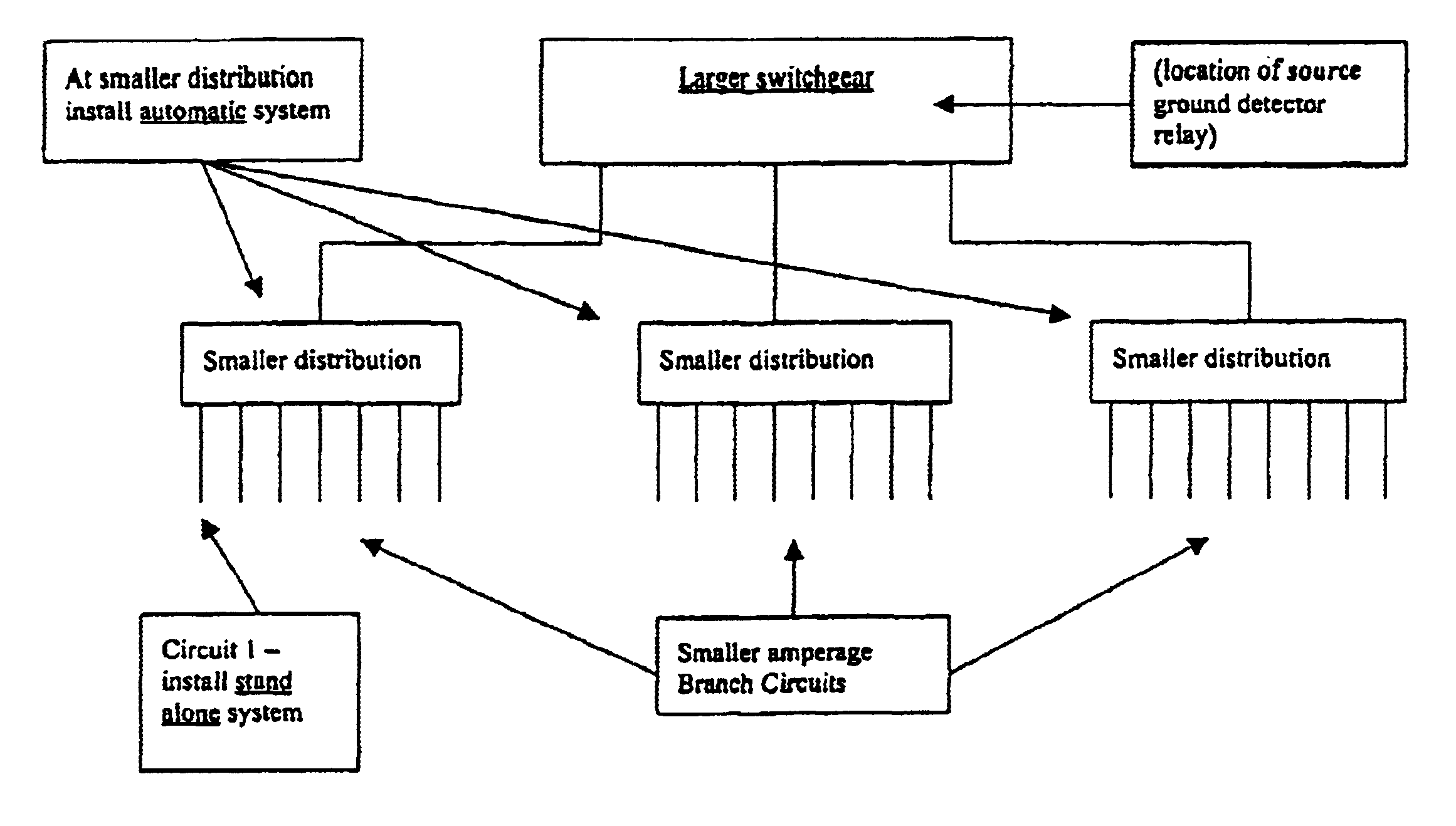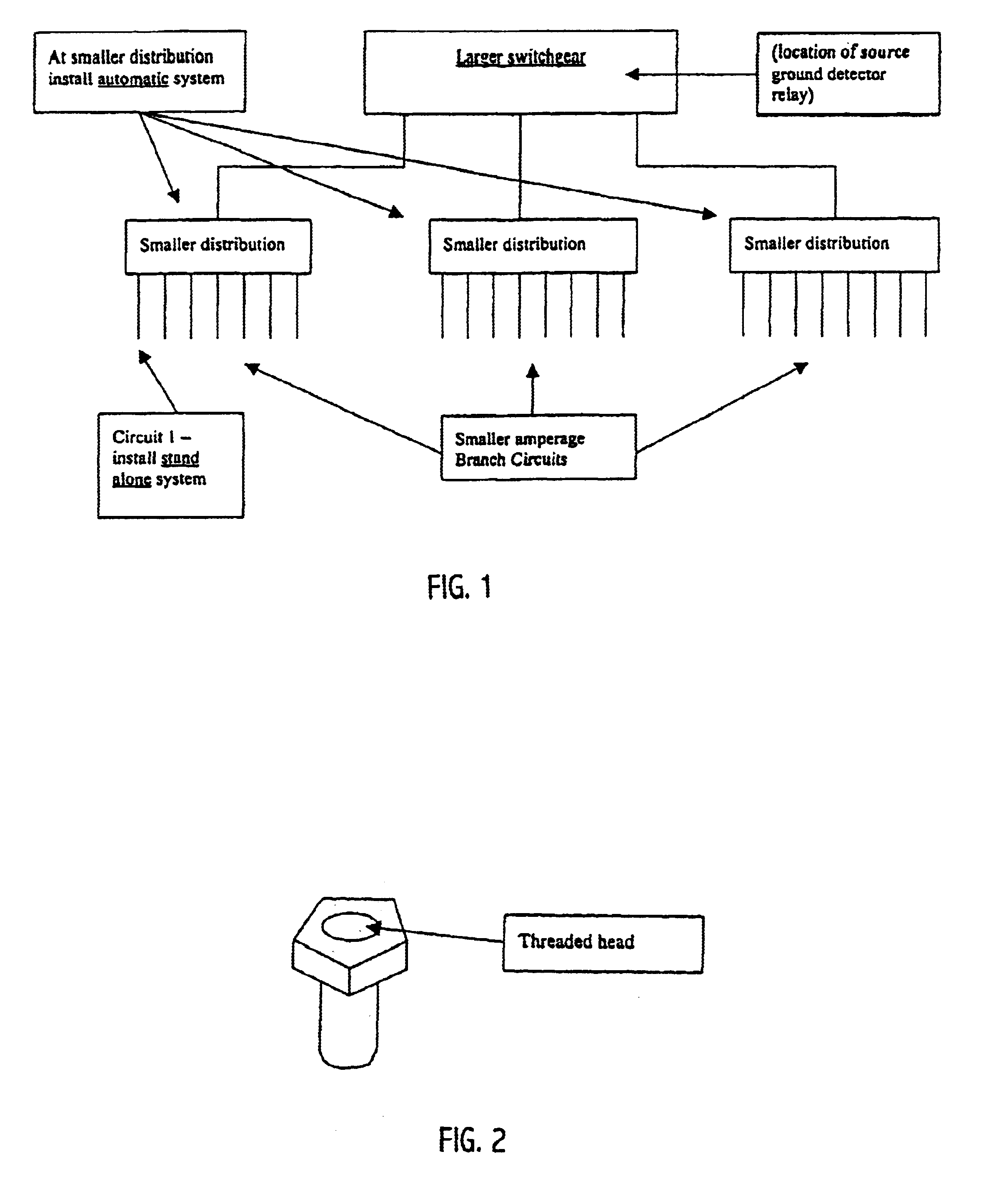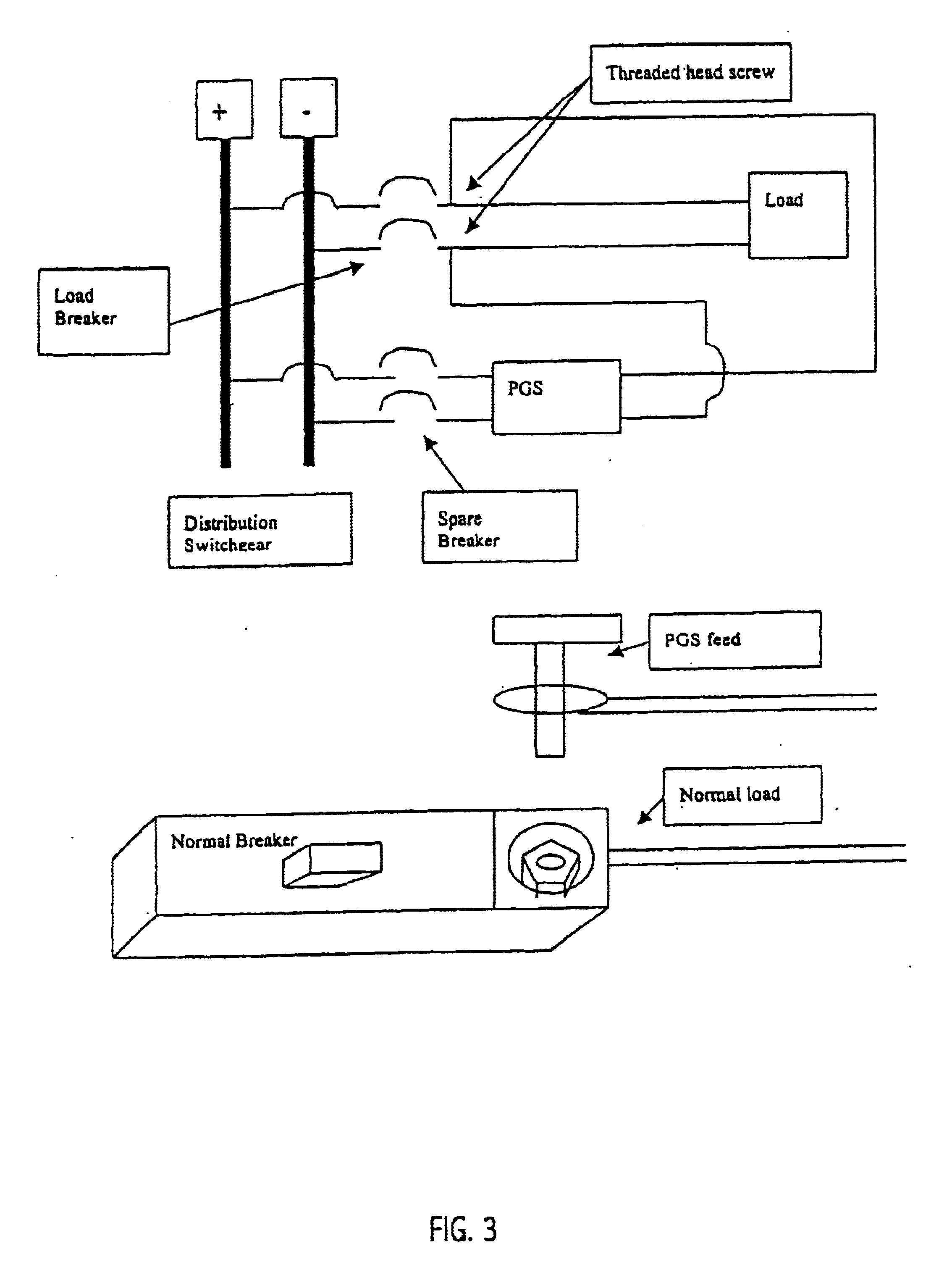Systems and methods for locating a ground fault without de-energizing the circuit
a technology of ground fault and circuit, applied in the field of systems and methods for locating ground faults, can solve the problems of inability to identify on which branch circuit the ground is located, inability to locate the actual source of ground, and traditional ground locating equipment falling short in detecting high resistance ground
- Summary
- Abstract
- Description
- Claims
- Application Information
AI Technical Summary
Benefits of technology
Problems solved by technology
Method used
Image
Examples
Embodiment Construction
The present invention relates to systems and methods for locating a ground fault. More particularly, the present invention relates to systems and methods for locating any grounded circuit on an ungrounded AC or DC system without de-energizing the circuit, and enabling isolation of the grounded component of the circuit.
Some embodiments of the present invention enable a load to be fed through an isolation device, such as a transformer or distribution switchgear for AC systems or a DC-to-DC converter for DC systems, and isolated from the normal distribution system without ever being de-energized. Once the isolating device is paralleled with the normal source for the load, the normal source is removed, leaving the load energized and fed through the isolating device solely. Thus, any ground that comes in on the secondary side of the isolation device is isolated from the system feeding it.
Some embodiments further embrace adding a ground detector relay at the secondary side of the isolatio...
PUM
 Login to View More
Login to View More Abstract
Description
Claims
Application Information
 Login to View More
Login to View More - R&D
- Intellectual Property
- Life Sciences
- Materials
- Tech Scout
- Unparalleled Data Quality
- Higher Quality Content
- 60% Fewer Hallucinations
Browse by: Latest US Patents, China's latest patents, Technical Efficacy Thesaurus, Application Domain, Technology Topic, Popular Technical Reports.
© 2025 PatSnap. All rights reserved.Legal|Privacy policy|Modern Slavery Act Transparency Statement|Sitemap|About US| Contact US: help@patsnap.com



